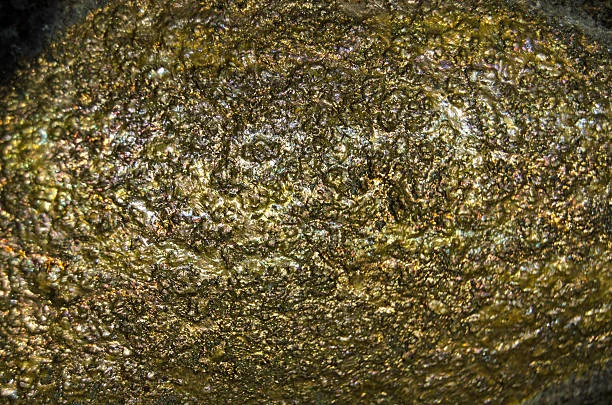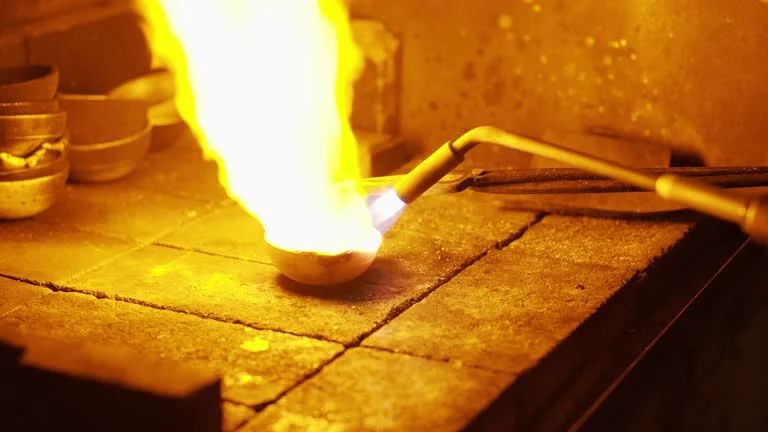
Introduction
In the gold extraction industry, cyanide gold sludge is a by - product generated during the cyanidation process. This sludge not only contains valuable metals such as gold and silver but also harmful substances like cyanide. The treatment of cyanide gold sludge is crucial for both resource recovery and environmental protection. Chlorination process has emerged as an effective method for treating this sludge, offering a way to separate valuable metals and detoxify the cyanide - containing substances.
Principles of Chlorination Process
Oxidation and Selective Dissolution
The chlorination process takes advantage of the different oxidation - reduction potentials of metals in a certain medium. In the context of treating cyanide gold sludge, when a chlorinating agent (such as sodium chlorate in an acidic medium) is added, metals with lower oxidation - reduction potentials, such as zinc, iron, lead, and copper, are preferentially oxidized and dissolved in the solution. For example, in a hydrochloric acid medium, metals in the gold sludge react with the solution. Subsequently, when sodium chlorate is added, it increases the solution potential, allowing copper and other impurities that are insoluble in hydrochloric acid to be fully oxidized and dissolved. By precisely controlling the solution potential, precious metals like silver and gold can be left in the residue.
Cyanide Destruction
Cyanide in the gold sludge is highly toxic. Chlorination can also play a role in destroying cyanide. In an alkaline environment, when a chlorine - based oxidant (such as chlorine gas, sodium hypochlorite, etc.) is added, cyanide is first oxidized to cyanate and then further oxidized to carbon dioxide and nitrogen. The general reaction mechanism is as follows: In the presence of an alkaline solution, the added chlorine - containing oxidant generates species such as OCl⁻. Cyanide (CN⁻) reacts with OCl⁻, and through a series of oxidation reactions, it is converted into less harmful substances.
Application Steps of Chlorination Process in Treating Cyanide Gold Sludge
Pretreatment
Before the chlorination process, the cyanide gold sludge usually needs pretreatment. This may involve processes such as grinding to reduce the particle size of the sludge, which can increase the contact area between the sludge and the chlorinating agent, thereby improving the reaction efficiency. Additionally, if the sludge contains a large amount of impurities that can interfere with the chlorination reaction, such as excessive amounts of certain metal oxides or sulfides, pre - leaching with appropriate reagents may be carried out to remove these interfering substances.
Chlorination Reaction
1.First - stage Chlorination (Impurity Removal)
In the first - stage of the chlorination reaction, the main goal is to remove base metals from the cyanide gold sludge. The sludge is placed in a reaction vessel with a suitable acidic medium (usually hydrochloric acid). Then, a chlorinating agent, such as sodium chlorate, is gradually added. The reaction temperature, acidity, and the rate of adding the chlorinating agent need to be carefully controlled. For example, the reaction temperature may be maintained within a certain range, typically around 40 - 60 °C, and the acidity of the hydrochloric acid solution is adjusted to an appropriate concentration, usually around 1 - 3 mol/L.
During this process, the oxidation - reduction potential of the reaction system is monitored. When the potential reaches a specific range (for example, for the removal of certain base metals, the potential may be controlled between 400 - 450 mV), base metals such as zinc, iron, and part of copper are oxidized and dissolved into the solution. The reaction time varies depending on the composition and particle size of the sludge, generally ranging from 2 - 4 hours.
2.Second - stage Chlorination (Gold and Silver Separation)
After the first - stage of impurity removal, the residue mainly contains gold, silver, and some remaining impurities. In the second - stage of chlorination, the conditions are adjusted to selectively dissolve gold or silver. If the goal is to dissolve gold, the reaction conditions are adjusted to increase the oxidation - reduction potential. For example, by adding more sodium chlorate and adjusting the acidity and temperature appropriately, the potential can be increased to a range where gold can be oxidized and dissolved (usually around 1000 - 1050 mV).
As the reaction proceeds, gold is converted into soluble gold chloride complexes in the solution. Silver may form insoluble silver chloride under certain conditions and remain in the residue. The reaction time for this stage may be around 0.5 - 1 hour, depending on the amount of gold in the sludge.
Metal Recovery
1.Gold Recovery
After the gold is dissolved in the solution as gold chloride complexes, it can be recovered by reduction. Reducing agents such as sodium sulfite, oxalic acid, or hydrazine can be used. When using sodium sulfite as a reducing agent, the solution is adjusted to an appropriate pH value (usually around 1 - 2), and then sodium sulfite is added gradually. The reaction equation for the reduction of gold chloride complexes by sodium sulfite is: 3H₂O + 3Na₂SO₃+2HAuCl₄ = 3Na₂SO₄ + 8HCl + 2Au.
The reduction process is also monitored by measuring the oxidation - reduction potential of the solution. The end - point of the reduction can be determined when the potential reaches a certain value (for example, for the first - stage of reduction using sodium sulfite, the end - point potential may be around 590 - 730 mV). The precipitated gold is then filtered, washed, and dried to obtain pure gold products.
2.Silver Recovery
If silver remains in the residue after the second - stage of chlorination, it can be further processed to recover silver. One common method is to treat the residue with a suitable reagent to dissolve silver, such as using nitric acid to dissolve silver chloride to form silver nitrate solution. Then, silver can be recovered from the silver nitrate solution by methods such as electrolysis or reduction with a suitable reducing agent.
Cyanide - containing Wastewater Treatment
The wastewater generated during the chlorination process of cyanide gold sludge contains residual cyanide. To meet environmental discharge standards, this wastewater needs to be treated. Alkaline chlorination is a common method for treating this type of wastewater. In an alkaline environment (pH > 10), a chlorine - based oxidant is added to the wastewater. Cyanide in the wastewater is oxidized to cyanate first and then further oxidized to non - toxic carbon dioxide and nitrogen. The reaction is carried out under proper mixing and reaction time conditions to ensure complete oxidation of cyanide.
Advantages of Chlorination Process
High Metal Recovery Rate
The chlorination process can achieve a high recovery rate of valuable metals in cyanide gold sludge. By precisely controlling the reaction conditions and oxidation - reduction potential, it is possible to selectively dissolve and recover gold and silver, while effectively removing base metal impurities. For example, in well - optimized processes, the gold recovery rate can reach over 95%, and the silver recovery rate can also be relatively high, depending on the initial composition of the sludge.
Efficient Cyanide Destruction
As mentioned above, the chlorination process can effectively destroy the highly toxic cyanide in the gold sludge. This is of great significance for environmental protection, as it can prevent the release of cyanide into the environment, reducing potential harm to human health and the ecological environment.
Adaptability to Different Sludge Compositions
The chlorination process shows good adaptability to cyanide gold sludges with different compositions. Whether the sludge has a high or low content of gold, silver, and various base metals, appropriate adjustment of reaction conditions such as the type and amount of chlorinating agent, reaction temperature, acidity, and oxidation - reduction potential can be made to achieve effective treatment.
Challenges and Solutions in the Chlorination Process
Equipment Corrosion
The acidic and oxidizing environment in the chlorination process can cause severe corrosion of equipment. The use of chlorine - containing oxidants and acidic media, especially hydrochloric acid, can corrode the reaction vessels, pipelines, and other equipment. To address this problem, corrosion - resistant materials need to be selected. For example, reaction vessels can be made of materials such as high - quality stainless steel, titanium alloys, or lined with corrosion - resistant materials such as rubber or graphite. Regular inspection and maintenance of equipment are also necessary to detect and repair corrosion - related problems in a timely manner.
Generation of Toxic By - products
During the chlorination process, especially in the treatment of cyanide - containing substances, there is a risk of generating toxic by - products. For example, when cyanide is oxidized, cyanogen chloride, which is toxic, may be produced. To solve this problem, appropriate reaction conditions need to be strictly controlled. In the case of cyanide oxidation, maintaining an alkaline environment can prevent the formation of cyanogen chloride. Additionally, proper ventilation and gas treatment systems should be installed in the production area to avoid the accumulation of toxic gases.
High Energy and Reagent Consumption
The chlorination process often requires a certain amount of energy for heating, stirring, and operating equipment. In addition, the use of chlorinating agents and other reagents also incurs costs. To reduce energy and reagent consumption, process optimization can be carried out. For example, through improving reaction efficiency by optimizing reaction conditions, reducing unnecessary heating and stirring times, and improving the utilization rate of reagents through better process design and control.
Conclusion
The chlorination process is a promising method for treating cyanide gold sludge. It combines the recovery of valuable metals and the detoxification of cyanide - containing substances. Although there are some challenges in its application, with the continuous improvement of technology and the adoption of appropriate solutions, the chlorination process can play an increasingly important role in the gold extraction industry, contributing to both economic benefits and environmental protection.
- Random Content
- Hot content
- Hot review content
- Toxicity Assessment of Sodium Cyanide and Relevant Hazard Prevention Measures
- Industrial concentrated nitric acid 55%-68%
- Plastic Shock Tube(VOD≧1600m/s)
- Ammonium Chloride 99.5% Mining Collector
- Acetone
- Industrial Acetic Acid 99.5% Colorless Liquid Glacial acetic acid
- Antimonium Tartrate Potassium
- 1Discounted Sodium Cyanide (CAS: 143-33-9) for Mining - High Quality & Competitive Pricing
- 2Sodium Cyanide 98% CAS 143-33-9 gold dressing agent Essential for Mining and Chemical Industries
- 3Sodium Cyanide 98%+ CAS 143-33-9
- 4Anhydrous Oxalic acid 99.6% Industrial Grade
- 5Soda Ash Dense / Light 99.2% Sodium Carbonate Washing Soda
- 6Oxalic acid for mining 99.6%
- 7Calcium hydroxide Industrial Grade 90%
- 1Sodium Cyanide 98% CAS 143-33-9 gold dressing agent Essential for Mining and Chemical Industries
- 2High Quality 99% Purity of Cyanuric chloride ISO 9001:2005 REACH Verified Producer
- 3 High-Quality Sodium Cyanide for Leaching
- 4Powdery emulsion explosive
- 5Industry Grade Electron grade 98% Sulfuric Acid H2SO4 Sulphuric Acid Battery Acid Industrial Sulfuric Acid
- 6Colloidal emulsion explosive
- 7sodium hydrosulfide 70% flakes used Mining Industry












Online message consultation
Add comment: